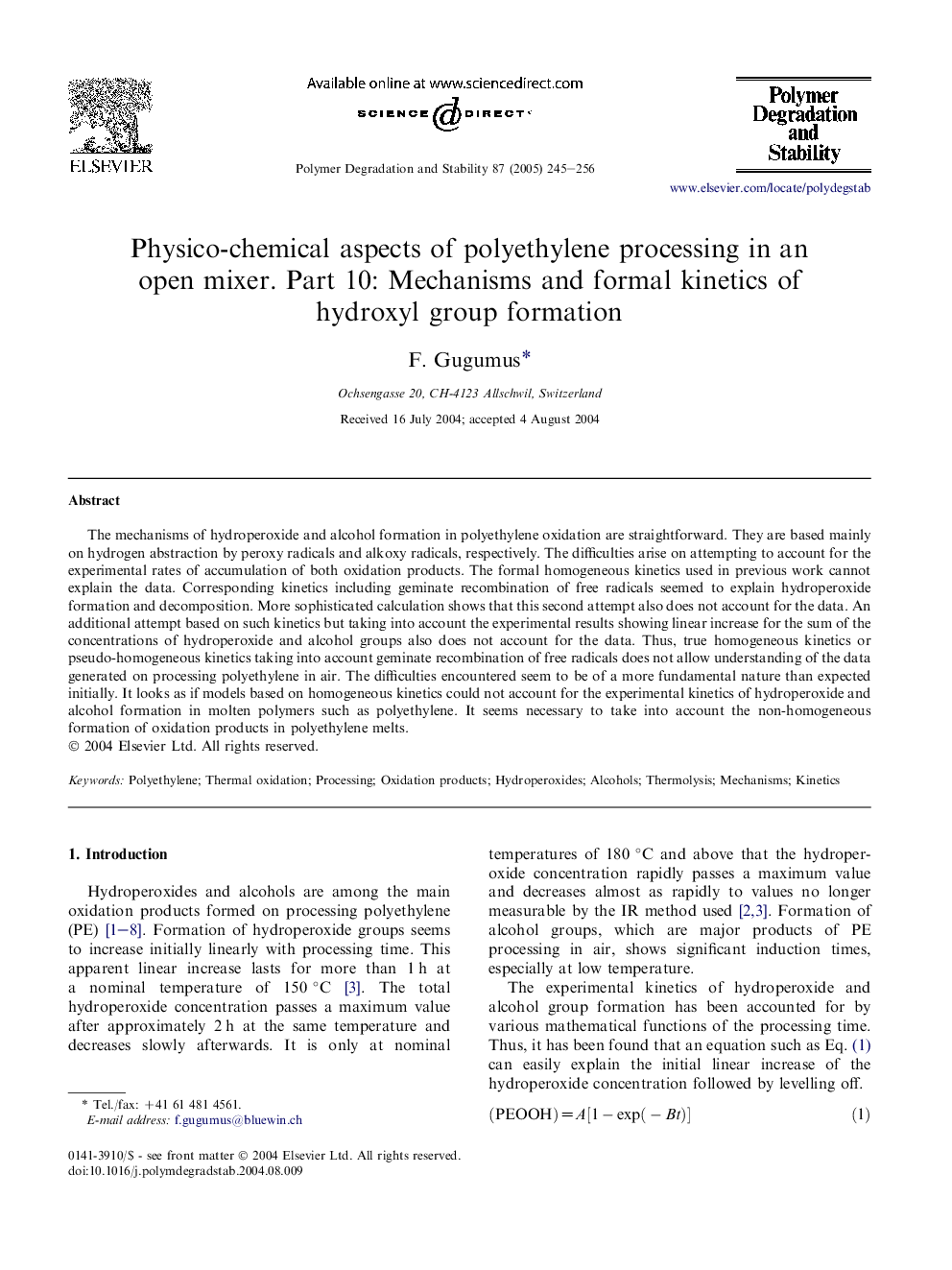| Article ID | Journal | Published Year | Pages | File Type |
|---|---|---|---|---|
| 9560836 | Polymer Degradation and Stability | 2005 | 12 Pages |
Abstract
The mechanisms of hydroperoxide and alcohol formation in polyethylene oxidation are straightforward. They are based mainly on hydrogen abstraction by peroxy radicals and alkoxy radicals, respectively. The difficulties arise on attempting to account for the experimental rates of accumulation of both oxidation products. The formal homogeneous kinetics used in previous work cannot explain the data. Corresponding kinetics including geminate recombination of free radicals seemed to explain hydroperoxide formation and decomposition. More sophisticated calculation shows that this second attempt also does not account for the data. An additional attempt based on such kinetics but taking into account the experimental results showing linear increase for the sum of the concentrations of hydroperoxide and alcohol groups also does not account for the data. Thus, true homogeneous kinetics or pseudo-homogeneous kinetics taking into account geminate recombination of free radicals does not allow understanding of the data generated on processing polyethylene in air. The difficulties encountered seem to be of a more fundamental nature than expected initially. It looks as if models based on homogeneous kinetics could not account for the experimental kinetics of hydroperoxide and alcohol formation in molten polymers such as polyethylene. It seems necessary to take into account the non-homogeneous formation of oxidation products in polyethylene melts.
Keywords
Related Topics
Physical Sciences and Engineering
Chemistry
Organic Chemistry
Authors
F. Gugumus,
